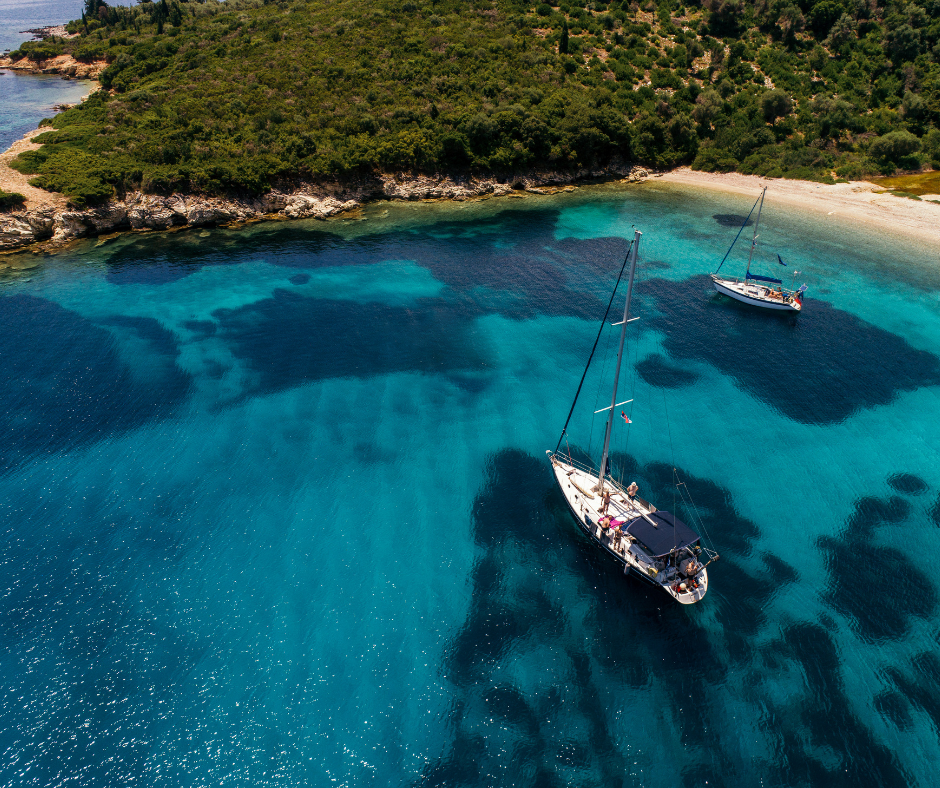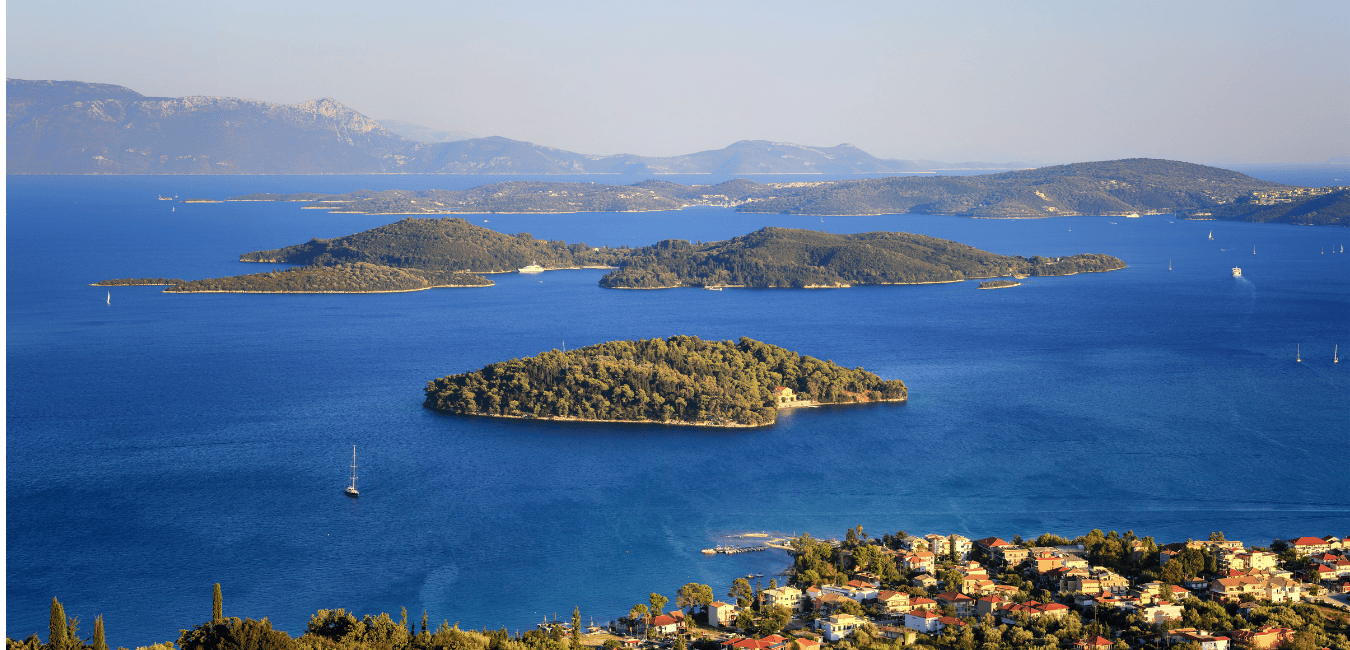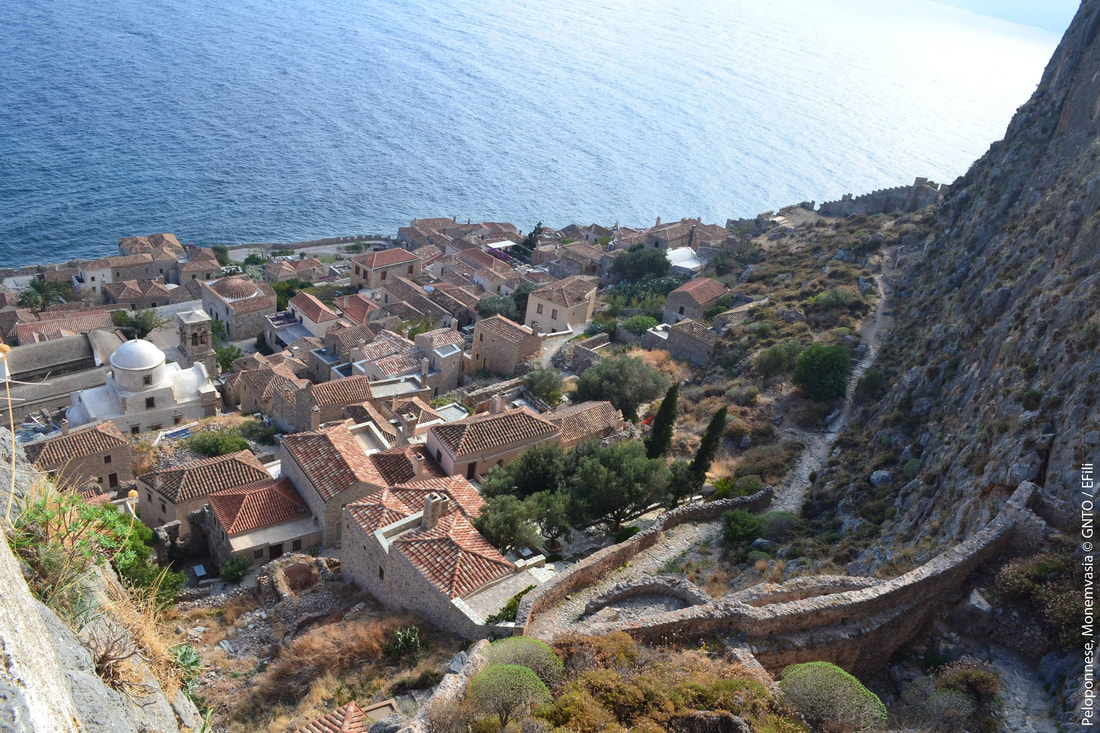|
This week’s Island of the Week is the Argo-Saronic island of Poros. Actually made up of two islands joined by a bridge. Spheria, which was created by volcanic activity, is taken up mostly by Poros Town and is the closest to the Peloponnese (just 200m at its shortest). Kalavria is the far larger of the two islands and is covered in dense pine forest. How to get there Poros doesn’t have a domestic airport and can be reached by ferry from Piraeus, either by high-speed (approx. 1 hour) or slow ferry (approx. 2 ½ hours) run by either Saronic Ferries or Blue Star Ferries . There are several of these ferries a day which stop at the other Saronic islands such as Aegina and Agistri. 5 Places to Visit on PorosThere are many places to see in Poros Town although many of the more popular ones are dotted around on Kalavria. These included all of the more scenic ones. We’ve picked these 5 places for their interest and as they give you a feel of the history and culture of the Poros.
1 – Monastery Beach Located in the south of Kalavria beneath the Zoodohos Pighi Monastery (which is also a must see by the way) this quiet beach has sparkling clear waters which stretch out towards the mainland. With pine forests coming down from the hills and the Monastery overlooking it, you are sure of a beautiful backdrop whilst swimming around or lounging on a sunbed. There are some amenities at the beach and water sports and underwater diving are available there as well. The beach is 5km from Poros town and can be reached by foot, car, bus, taxi or even water taxi from Poros town.
0 Comments
In recent months we’ve seen an increase in interest and enquiries for Meganisi, so we thought it was a great time to showcase what this great little island has to offer. A small island in the Ionian group, it is filled with luscious greenery, scenic villages and an abundance of beautiful coastline that holds many secluded beaches and the sea caves which the island is known for. In this article we’ll take you through how to get there, where to stay and things to do so that you will have all the information you need to know to decide when to visit this beautiful island. How to get there Meganisi doesn’t have an airport as it is far too small for one. The nearest one is on the mainland at Preveza. Preveza Airport is accessible from a number of UK airports, these are Gatwick, Heathrow, Luton, Stansted, Birmingham, Manchester, Edinburgh and Bristol. From there you can get a transfer to the town of Nidri on the island of Lefkas. Lefkas is connected by a bridge to the mainland which makes it another great place to visit from Preveza. A good twin centre Ionian island hopping itinerary is Lefkas and Meganisi due to their close proximity and good ferry links. Once at Nidri, you would then get a ferry across to Meganisi. Where to stay on Meganisi
There are 3 villages on Meganisi – Spartochori, Vathi and Katomeri. Vathi is the most picturesque village on the island and sits at the end of an inlet with lots of seaside tavernas and cafes to choose from as well as a number of hotels and villas. This idyllic village is the best place to stay on the island. If you’re looking for convenience and gorgeous views then choose Spartochori. This is where the ferry from Lefkas arrives so you can easily walk up to your accommodation. There is only one taxi on the island, so walking is best and only a short distance. The village sits on a hill overlooking the beach and marina and its narrow streets house gorgeous buildings, tavernas and cafes as well as apartments and hotels. Spartochori is also the largest of the three villages. Finally, Katomeri sits on a hill looking out across the eastern half of the island. There are fewer hotels and tavernas here, but it is still very beautiful place to stay. Wherever you decide to stay on Meganisi, it will provide stunning views, pretty buildings and will be near to everywhere, as you can walk between the three villages in an hour. The Peloponnese is the name given to the southern part of the Greek mainland, from the Corinth Canal downwards. This is where Greece shines through – the food is amongst the best in the country, the region's vineyards provide some of the new guard of Greek wines that are winning awards but most importantly the ‘filoxenia’ or hospitality really is visible here. The area has so much to visit as well, such as beautiful beaches and lovely towns, however it is also home to many of Greece’s historical landmarks, especially from the classical period. Unless you want to stay in one place for the majority of your holiday, you will need to rent a car to see many of them and this opens up opportunities. In this article we’ll take you through how to do a 7 day road trip across the Peloponnese, starting and ending at the region's airport of Kalamata, in which you can take in most of the historical landmarks of the area. At The Greek Specialist, we can all the stress out of it and organise the whole thing from flights to accommodation and car hire, it can all be discussed at the time of enquiry. How to get there Kalamata is the airport to fly into for the Peloponnese. You can fly into Kalamata from London Gatwick, Heathrow, Birmingham, Stansted, Bristol and Manchester. For most of these destinations there is only one or two flights a week, giving us our timeframe for a 7 day road trip. Flights into Kalamata for 2023 go on a Tuesday, Wednesday, Thursday, Saturday and Sunday, although most tend to be at a weekend. Day 1
After landing in Kalamata, you can either spend the day exploring all the city has to offer and stay the night there or you can drive to Sparta, which takes just over an hour, from which you can then explore the next day. If you’re staying in Kalamata, there’s plenty to explore, whether it be museums or churches such as the Church of Agioi Apostoloi or relaxing on any one of the beaches on the cities coast. If you drive straight to Sparta, there’s many places to get some food whilst you walk around the city and take in the sights and sounds. Day 2 Once you’re in Sparta, the two main historical sites are the remains of Ancient Sparta and Mystras. The archaeological site of the famous ancient Sparta is in the north of the town. Here you can explore the fascinating area and see the sites of the Acropolis, Sanctuary of Artemis Orthia and the theatre amongst others. The sites which remain date back as far as nearly 3000 years ago. Think about the history they have seen, walking through you can imagine what it was like in its heyday. Not far out of the town is Mystras, a Byzantine settlement dating back to the 13th century. Built around a large hill, much of the settlement is still standing and one of the churches hosts a museum holding various items from the city. Not only has this settlement still got many of its original buildings, all of which give a good idea of the importance of the city in the region, but also it has a wonderful panoramic view across the surrounding landscape. Possible Addition From Sparta you can then drive north towards Nafplion, if you want to however, you can detour to Monemvasia. Known as the Gibraltar of the East, Monemvasia’s main town is on the easternmost of the Peloponnese’s southern peninsulas. The castle and part of the town is located on a small outcrop which is attached to the mainland by a 200m long causeway. The settlement dates back to the 6th century AD and is another example of the Byzantine era of the region. Much of the town keeps its original rustic appearance and many of the buildings have been restored to keep up the appearance of the town. It should be visited if you have the time. Santorini is an island in the Aegean Sea, in the Cyclades island group. It is very popular with tourists and is one of the most recognisable islands in all of Greece, known for its whitewashed buildings that climb the caldera side of the island. If you’ve decided you want to go to Santorini, you probably know where you want to stay (if not or either way we can help, just click here to fill in our enquiry form), but when is the best time to go? You probably want to know what Santorini’s weather is like and how busy it is going to be to help you decide. In this article we’ll talk you through all of this and more so that you can have the best possible time in Santorini. How to get there Santorini Airport, known as Kratikos Aerolimenas Santorinis is located in the central part of the island’s eastern coast. You can fly there from both major UK airports like Gatwick, Heathrow and Manchester or regional ones such as Bristol, East Midlands, Newcastle and Edinburgh. With plenty of options and flights it’s easy to get to Santorini. Santorini is a great place to have as part of an island hopping itinerary, especially as a start or end point due to its international airport and excellent ferry links. When is the best time to go?
Like much of Europe, Santorini has its warmest weather in July and August, with temperatures regularly reaching over 30 degrees. This is also when it is the busiest as school holidays in the UK mean families descend on the island looking for some sun. Not only is it the busiest time to visit but the most expensive as hotel prices are higher than usual, knowing it will be busy and demand will be massive. Therefore, if you can visit at another time then it is recommended as it will be cheaper and less busy. Outside of these months June is the next busiest. Busy has become common for a number of years in Santorini though. Across the board 2022 was a record year for Greece with more people visiting than ever before. Smashing figures from 2019. June has the joint lowest average rainfall of the whole year and temperatures average around 27 and 28˚C. |
AuthorGreece is a love affair for The Greek Specialist. Our first visit to the country came in 1997 and since then Blog Destinations
All
Archives
August 2023
|










 RSS Feed
RSS Feed
